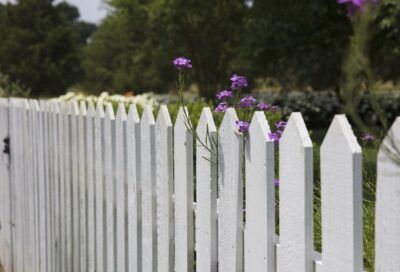Soffit is located on the span beneath the rafter tails, while the fascia is the exposed horizontal band you see at the end of the rafters. These architectural elements found along the eave area do more than just add visual interest and give a finished look to your home. They help protect the exterior of your house by keeping out pests like bats, birds and squirrels, and give you a way to disguise ventilation for your attic.
Directing water away from your home is essential for many reasons. Our foundations can be inundated by water if we don’t take the right precautions to direct water away from the home. Collecting rainwater is also a great way to keep your pants healthy and happy.
Creating an outdoor space that is attached to your home gives you the freedom to extend your living space in the summer season while maintaining all the comforts of home.
Your roof is the first defense against the elements. Next to practicality and function, design and appearance is also very important. There are many options when it comes to roofing depending on your climate.
1. Solar tiles
Advanced solar collectors integrate seamlessly into existing shingles, generating up to 1 kilowatt of energy per 100 square feet. They’re particularly good for sunny roofs in homeowners’ associations that forbid typical solar panels. While they may help offset energy costs with solar power, they also cost more than traditional solar options.
2. Asphalt shingles
Asphalt shingles are the most common roofing materials in Canada because they’re effective in all environmental conditions. Quality varies widely, so ask whether they pass the ASTM D3161, Class F (110 mph) or ASTM D7158, Class H (150 mph) wind tests and the AC438 durability test. Upfront costs are low, but you should expect to replace the shingles after about 20 years. If you live in a hail prone area, consider impact resistant shingles which have a UL 2218 Class 4 rating. Impact resistant shingles may qualify for a discount on your homeowner’s premium.
3. Metal roofing
Metal roofing comes in vertical panels or shingles resembling slate, tile and shake – and lasts about 60 years. Metal excels at sloughing off heavy snow and rain, won’t burn and resists high winds. It is lightweight and can be installed over existing roofs. However, metal can be noisy during rainstorms, and may dent from hail. Average costs range between $5 and $12 per square foot, depending on type and style of metal – which is more than asphalt but less than concrete tiles. Corrosion also varies by material.
4. Stone-coated steel
Interlocking panels mimic slate, clay or shingles and resist damage caused by heavy rains (up to 8.8 inches per hour), winds of 120 miles per hour, uplifting, hail and freeze-thaw cycles. Consequently, they’re an economical, effective choice for wet, windy regions or areas prone to wildfires. Some stone-coated steel roofs are warranted for the lifetime of the house.
5. Slate
Slate roofing lasts more than 100 years. It won’t burn, is waterproof and resists mold and fungus. Slate is effective in wet climates but is expensive, heavy and may be easily broken when stepped on. Keep this in mind if you live in an area that experiences hail.
6. Rubber slate
Rubber slate looks natural and can be cut with a knife to fit intricate roofs like those found on Victorian homes. Rubber slate roofs can last 100 years but can be damaged by satellite dishes and walking – so may also be susceptible to damage by hail, similar to slate. Roofing professionals that are trained to install rubber slate may be hard to find.
7. Clay and concrete tiles
Clay and concrete roof tiles can withstand damage from tornadoes, hurricanes or winds up to 125 miles per hour and even earthquakes, according to “A Summary of Experimental Studies on Seismic Performance of Concrete and Clay Roofing Tiles” by the University of Southern California for the Tile Roofing Institute. They are good in warm, dry climates. They may require extra support to bear their weight, and they are likely to break when walked on.
8. Green roofs
Green roofs are covered with plants and can improve air quality, reduce water runoff and insulate homes to reduce urban heat islands. However, they need extra structural support, a vapor barrier, thermal insulation, waterproofing, drainage, water filtration, soil, compost and plants. Their estimated lifespan is 40 years.
9. Built-up roofing
This heavy roofing consists of layers of asphalt, tar or adhesive topped with an aggregate and is only for flat roofs. Tar and gravel roofs, also for flat roofs, are best for roof-top decks with heavy foot traffic. These roofs may become sticky in summer, and it is harder to shovel snow off of these roofs when compared to smooth surfaces. They can last 20 to 25 years.
Regardless of what type of roof you go with, there is always a chance it can be damaged. Roofing can be expensive, so you want to make sure you’re covered when the unexpected happens.





